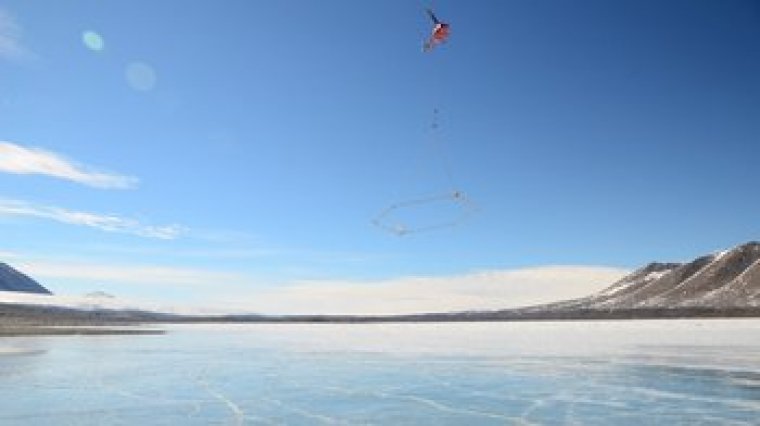| News / Science News |
Discovered deep under Antarctic surface: Extensive, salty aquifer and potentially vast microbial habitat
NSF | APRIL 29, 2015
Using a novel, helicopter-borne sensor to penetrate the surface of large swathes of terrain, a team of researchers has gathered compelling evidence that beneath Antarctica's ice-free McMurdo Dry Valleys lies a salty aquifer that may support previously unknown microbial ecosystems and retain evidence of ancient climate change.

A helicopter flies the AEM sensor over Lake Frxyell in the McMurdo Dry Valleys. ![]()
An airborne electromagnetic (AEM) sensor, called SkyTEM, mounted to the helicopter, allowed the team to discover that brines--salty water--form extensive aquifers below glaciers, lakes and within permanently frozen soils. The brines may also play an important role in contemporary biological processes in the Dry Valleys.
These unfrozen materials appear to be relics of past surface ecosystems and the findings provide compelling evidence that they now provide deep subsurface habitats for microbial life despite extreme environmental conditions.
In addition to providing answers about the biological adaptations of previously unknown ecosystems, the new information could also help scientists understand whether similar conditions might exist elsewhere in the solar system, specifically beneath the surface of Mars, which has similarities to the Dry Valleys.
The team also found evidence that brines flow towards the Antarctic coast from roughly 18 kilometers (11 miles) inland, eventually discharging into the Southern Ocean, a biologically rich body of water that encircles Antarctica.
YOU MAY ALSO LIKE




